Identity area
Reference code
Title
Date(s)
- 1994 - 2003 (predominant 1998 - 2003) (Creation)
Level of description
Fonds
Extent and medium
26.56 linear feet of textual records
Context area
Name of creator
Biographical history
The Environmentally and Socially Sustainable Development Network (ESSD) was created in 1997 as part of President Wolfensohn's reorganization of the World Bank. The reorganization's objective was to strike a better balance between country focus and sectoral excellence. It was also motivated by recognition that the Bank's development programs were excessively driven by a culture of lending. The need to increase attention towards on client needs and the quality of results was addressed.
To facilitate sharingof expertise and knowledge, the Bank established networks that linked Bank-wide communities of staff working in the same field across organizational boundaries and with external partners. The networks were intended to link staff working in the same sectors throughout the Bank, whether the staff member was located in the regional Vice Presidencies, sectoral departments, Independent Evaluation Group (IEG, formerly the Operations Evaluation Group [OED]), World Bank Institute (WBI), or Development Economics (DEC). The objectives and responsibilities of the networks were many: reduce fragmentation; increase information flow; set priorities; manage quality; run the information system; consolidate external partnerships; vet staff promotions; and disseminate best practices. The work programs of network staff focused on:
-
Global knowledge - putting the best development knowledge in the hands of Bank task teams; ensuring that the knowledge base was accessible to external clients; and contributing to the growth of the knowledge base.
-
Enhanced skills - developing and providing content to training courses; establishing professional and technical standards for professional development.
-
Shared strategies - assisting regional and central units to develop a common sector agenda, and ensuring that skills are effectively deployed across the entire network. Network leadership assumed responsibility for global programs, sector strategy development and evaluation, strategic partnerships, and learning and dissemination.
-
Best teams and best practices - improving the Bank's flexibility and mobility by building stronger task teams and delivering higher quality products.
-
Institutional initiatives - providing substantial support for new Bank-wide initiatives, such as social development, rural development, financial sector, anti-corruption, human resources, and knowledge partnerships.
ESSD was one of the first of three networks to be created in 1997; the others were the Poverty Reduction and Economic Management Network (PREM) and the Human Development Network (HDN). Soon after, in 1997-98, the Private Sector and Infrastructure Network (PSI) was created. In 2000-01, the Operation Policy and Strategy Department became the Operations Policy and Country Services Network (OPCS). In 2003-04, the PSI became the Financial and Private Sector Development Network (FPSD). In 2007 ESSD was combined with Infrastructure to form the Sustainable Development Network (SDN).
ESSD is organized in the same way as the other Bank networks. Each network is headed by a vice president and head of network. Under the vice president is a network council which that oversees the entire network. The council is composed of the top network managers from each Region and is responsible for setting the overall agenda for the network and for promoting effective deployment of skills across network units. It deliberates on issues relevant to the functions and objectives of the network - e.g., strategy; people; knowledge; quality/business process; and external partnerships.
Each thematic network covers several related sectors of development. When the ESSD was created in 1997, it contained three sector departments: Environment Department (ENV); Rural Development Department (RDV); and Social Development Department (SDV). It also contained the Secretariat of the Consultative Group for International Agricultural Research (CGIAR). In 2002, RDV was renamed the Agriculture and Rural Development Department (ARD). Each sector department has its own board, with representatives drawn from the Regions as well as from the network itself. The sector boards are accountable to the network council and are supported by a secretariat.
Repository
Archival history
Immediate source of acquisition or transfer
Records were transferred directly from sector units to the Archives using approved records retention and disposition schedules.
Content and structure area
Scope and content
The fonds consists of records that reflect the various activities of the Environmentally and Socially Sustainable Development Vice Presidencyof (ESSDVP) and its oversight of, and involvement with, sector departments within the network. Note that a small amount of records in this fonds were created prior to the creation of ESSDVP by Bank staff within the Environmentally Sustainable Development Vice Presidency (ESD); the records were brought into ESSDVP's recordkeeping system as a result of staff transfer into ESSDVP. The majority of the records in this fonds are clearly associated with the activities of Ian Johnson, ESSD Vice President from 1998 to 2006.
Appraisal, destruction and scheduling
Accruals
Accruals are expected.
System of arrangement
Conditions of access and use area
Conditions governing access
Records are subject to the World Bank Policy on Access to Information.
Conditions governing reproduction
Records are subject to the Copyright Policy of the World Bank Group.
Language of material
Script of material
Language and script notes
Physical characteristics and technical requirements
Finding aids
Allied materials area
Existence and location of originals
Existence and location of copies
Related units of description
Notes area
Alternative identifier(s)
Access points
Subject access points
Place access points
Name access points
Genre access points
Description control area
Description identifier
Institution identifier
Rules and/or conventions used
Internal World Bank Group Archives rules based on ISAD(G).
Disclosure status
Level of detail
Dates of creation revision deletion
15 November 2012



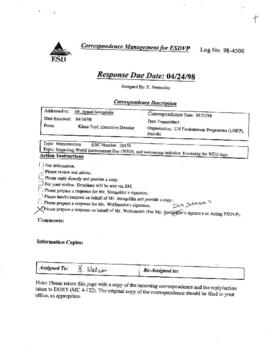

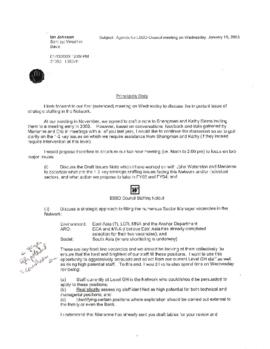
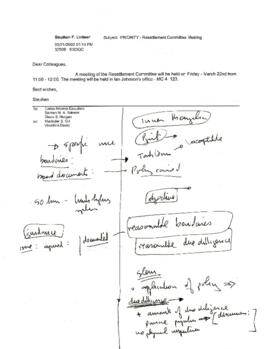
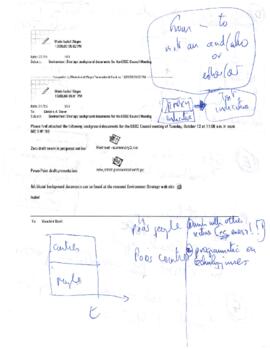
![Shared Unit Files - Policy Development Records - Operations Evaluation Department [OED] Review of...](/uploads/r/world-bank-group-archives/9/8/4/984e90d3a8d37ec6115c015c04efd72def6bf0ceef69d5ba94a3235134f15ffd/WorldBankGroupArchivesfolder1833747_142.jpg)
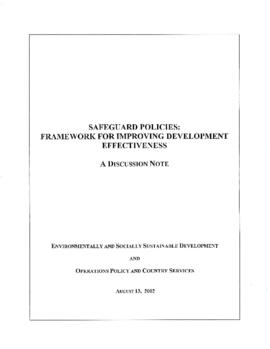

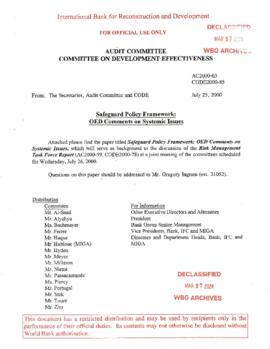
![Shared Unit Files - Policy Development Records - Operations Evaluation Department [OED] Review of...](/uploads/r/world-bank-group-archives/f/c/d/fcd20b0ecb31e9ca9df36fac3c640a17085af0b999cc68fdfec425f755f6cdf7/WorldBankGroupArchivesfolder1833749_142.jpg)

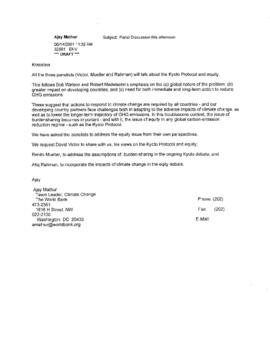

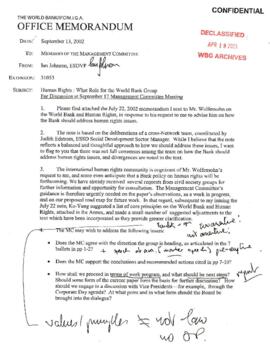

![Conferences and Seminars - Environmentally and Socially Sustainable Development Network [ESSD] Da...](/uploads/r/world-bank-group-archives/2/2/4/224e32fdb638a4b884da5ecb5bac675c722a831ad9070e97715ac9a8f82b3717/WorldBankGroupArchivesfolder1832591_142.jpg)

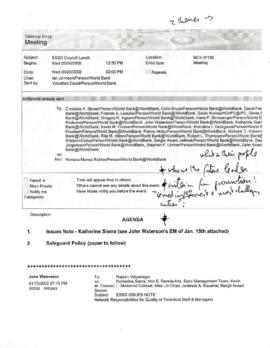
![Conferences and Seminars - Environmentally and Socially Sustainable Development Network [ESSD] We...](/uploads/r/world-bank-group-archives/d/9/c/d9c8161dedf5c0e25e6e7718d2a901ac0fa0bef530ba80e1163d9a7c0472f339/WorldBankGroupArchivesfolder1832577_142.jpg)